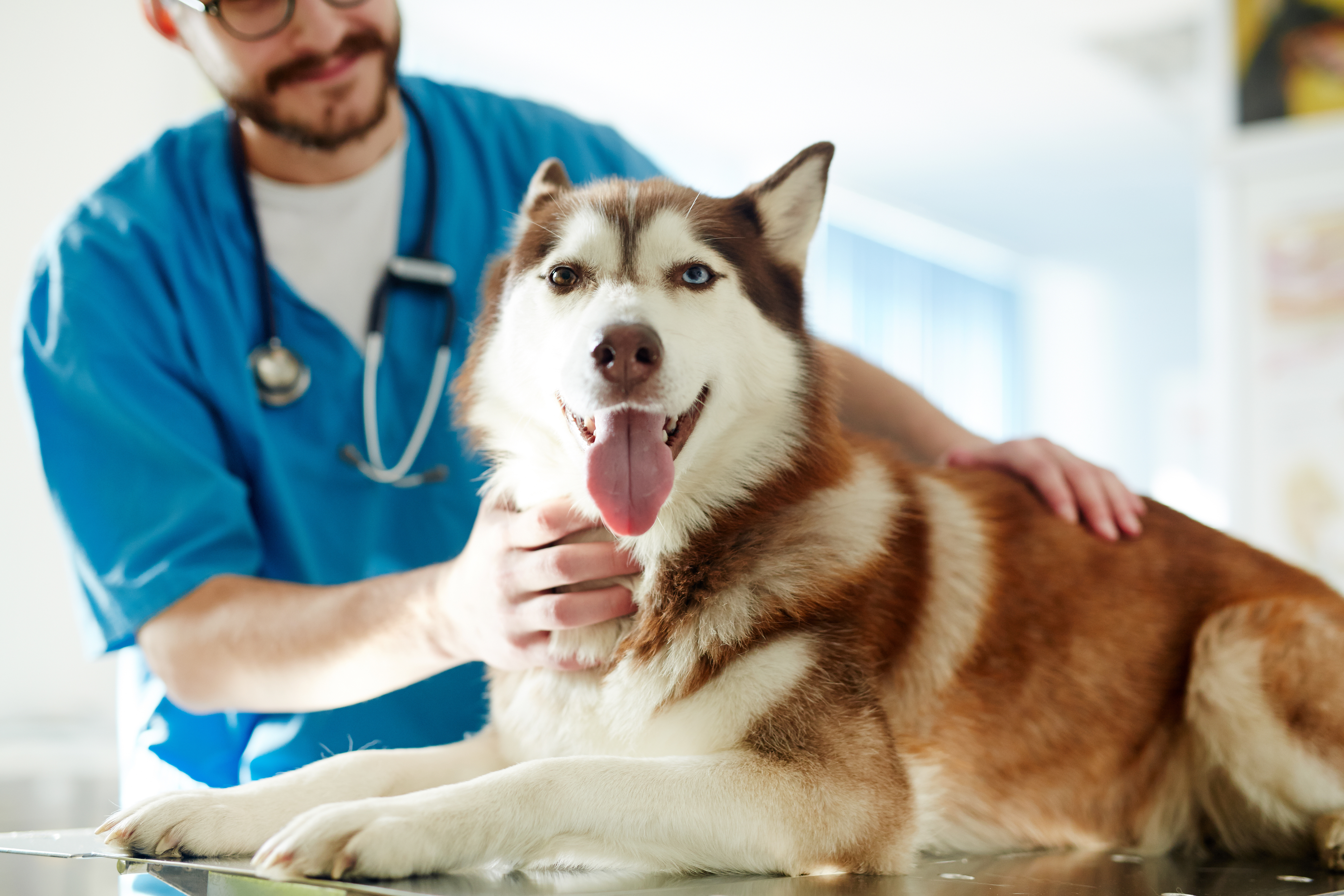
Are you concerned about your furry friend's hip health? In this comprehensive guide on hip dysplasia in dogs, we will explore everything you need to know about this common orthopedic condition. From its causes and symptoms to diagnosis and treatment options, we've got you covered. And when it comes to managing the financial aspect of hip dysplasia treatment, pet insurance can be a valuable resource.
Discover how pet insurance can provide financial assistance, making the necessary veterinary care more accessible. Hip dysplasia is a condition that can cause worry for pet parents. Here is what you need to know to help your dog live a happy and healthy life -- including symptoms, treatment, prevention, and more.
What It Is
Hip dysplasia is an issue that typically affects larger dog breeds (over 50 pounds), although it can happen to dogs of any size. Dog breeds most affected by this include:
- Boxers
- Labrador retrievers
- Golden retrievers
- German shepherds
- Great Danes
- Newfoundlands
- Rottweilers
- Pitbulls
- Australian shepherds
Hip dysplasia, which was first described in 1935, is the abnormal development of the coxofemoral joint (or hip), which is also called the ball and socket joint.
The "ball" of this joint is the top of the femur and the "socket" is the acetabulum. Hip dysplasia causes these to grow at different rates, rubbing together and resulting in the looseness (laxity) of joints and dislocation (where the ball and socket don't fit together normally).
Hip dysplasia is typically not diagnosed until dogs are older, and may also be accompanied by lameness, muscle atrophy, or osteoarthritis, a long-term degenerative joint disease that is caused by cartilage worn away by abnormal movement and leads to scar tissue formation and bone spurs.
Dogs with hip dysplasia can have varying degrees of the condition: they may have wear-and-tear that causes them pain and discomfort or even serious difficulty with mobility. However, while the condition is chronic, dogs can still live a long life, even if they have limited mobility and discomfort.
While the exact cause of hip dysplasia is not known, it's generally assumed to be a genetic condition. However, other factors -- such as diet, insufficient exercise, growth rate, muscle mass, hormones, and environmental factors -- can also contribute to the condition. Weight gain and obesity are two of the most common factors since both of these cause strain on a dog's joints, but pelvic muscle mass also plays a role.
Puppies may be born with a genetic predisposition to hip dysplasia, even if they are born with normal hips. As they age, they may end up developing lameness or abnormalities in their gait. Some of these issues can begin when dogs are as young as 3 months (juvenile hip dysplasia, which affects dogs under 18 months of age), while others may not have visible symptoms for years (mature hip dysplasia).
Symptoms

There are several visible symptoms of hip dysplasia that can be spotted in dogs. In juveniles, this includes:
- "Bunny hopping," or when a dog lifts both hind legs at the same time and looks as though they are hopping like a rabbit
- Shifting weight to the front limbs
- Difficulty or reluctance rising, standing, playing, or exercising
- Lethargy
- Reduced activity
- Chronic or occasional lameness, limping, stiffness, and weakness in one or both hind legs after no injury or trauma
- Not using a certain paw
- Wobbling
- A bone visibly jutting out
- Pain when being pet or touched around the hip and pelvis area
- Joint looseness
- Clicking or grating sounds from hips while walking or exercising
- Decrease in thigh muscle mass
- Decreased range of motion
- Shoulder mass growth from using front legs instead of hind legs due to hip pain
- Sitting abnormally
In mature forms, these symptoms include:
- Muscle atrophy in one or both hind legs
- Lameness and limping after exercise
- Difficulty jumping or climbing stairs
- History of progressive rear limb lameness
In many cases, dogs may not show visible symptoms of hip dysplasia until they are older and have lived with it for years. You may not even notice any symptoms until they begin to limp.
It's also possible for younger dogs to show symptoms and then improve once the body produces fibrous tissue to stabilize loose joints.
Unfortunately, hip dysplasia is painful for dogs, so it's important to keep an eye out for any changes, especially if they are a breed prone to these conditions.
Diagnosis
If you notice any symptoms of hip dysplasia, you should make an appointment with your veterinarian as soon as possible for a possible diagnosis.
Your veterinarian will determine whether your dog has hip dysplasia by going over some important information, such as your dog's history, any injuries (current or previous), exercise and activity regimen, and diet. They may perform a physical and check your dog's hips and legs for the range of motion, discomfort, joint laxity, or a clicking or grinding sound coming from their joints.
In some cases, veterinarians may even take blood tests to check for inflammation due to joint disease (which can be found through a blood count) and X-rays of your dog to help make a definitive diagnosis.
Some screening methods that look for signs of hip dysplasia include the Orthopedic Foundation for Animals (OFA) protocol, which can be performed on dogs as young as four months of age and typically doesn't require sedation, and the PennHIP protocol, which requires a dog to be at least two years of age at requires sedation.
These methods can even help determine the probability of degenerative joint disease later in life. However, the accuracy of these tests are not completely accurate: OFA certification is one of the most commonly used tests to determine hip dysplasia and doesn't guarantee that a dog (or their offspring) won't develop osteoarthritis in the future; PennHIP, on the other hand, is typically more accurate when predicting whether or not osteoarthritis will eventually develop.
PennHIP evaluations are usually more expensive than OFA certifications, and the cost of both of these can add up over time. Pet insurance can help you cover some or all of the costs of evaluation, treatment, and even surgery (more on that below).
Treatment

While many dogs may be able to deal with hip dysplasia on their own (and with the support of their owners), around 30% will need treatment later in their life.
There is no cure for hip dysplasia, but treatment and supportive care can help your dog live a long, happy, and comfortable life.
Treatment depends on the severity of the condition, symptoms, and level of discomfort. Veterinarians may prescribe corticosteroids or non-steroidal anti-inflammatory drugs (NSAIDs) such as meloxicam. However, the medications provided may vary based on individual needs and your dog may need to try a few before finding the most effective one. Make sure you monitor your dog closely for any side effects.
Analgesics may also be prescribed for additional relief and even for symptoms of osteoarthritis: these include gabapentin, tramadol, and codeine.
Your veterinary may also recommend supplements to help with your dog's hips and joints, such as glucosamine, chondroitin sulfate, methylsulfonylmethane, and omega-3 fatty acid nutritional supplements that can manage cartilage breakdown in joints. Dogs may also receive routine polysulfated glycosaminoglycan injections.
Lifestyle changes can also help your dog. A healthy diet and weight loss (if they are overweight) can help take the strain off hip joints, and treatment regimens should include moderate daily exercise and low-impact activities to help strengthen the muscles. Consider taking your dog for swims since it is gentle on their joints.
In a severe case of hip dysplasia, after all other options have been retired, dogs may need surgery. While this is usually a last-case scenario, it can give dogs a chance to return to their normal functioning self. Common surgical procedures include:
- Total hip replacement (THR), which is used for dogs over 12 months and involves replacing degenerated joint structures with synthetic components (such as metal and plastic implants) to help with hip discomfort and pain. 90-95% of dogs will be able to function normally once they have recovered from the surgery.
- Femoral head ostectomy (FHO)/Excision arthroplasty, a procedure in which the ball at the top of the femur is removed to prevent the rubbing in the hip joint. This is generally used as a last resort and used as a way to successfully manage pain. This surgery can be done on young and mature dogs.
- Double pelvic osteotomy (DPO) or triple pelvic osteotomy (TPO), which is used for young dogs who have had unsuccessful conservative management for hip dysplasia and involves cutting the pelvic bone and rotating the segments to make the joint fit better, has a high success rate of 80-90% and quick recovery (around 3 months). This is usually reserved for dogs under 10 months.
- Juvenile pubic symphysiodesis (JPS), which is a surgery that closes a growth plate at the bottom of the dog's pelvis to let the joint grow together. This can be done if your dog is diagnosed early (around 10 to 18 weeks).
The type of surgery recommended is determined by your dog's lifestyle, age, and the severity of the condition. Your veterinarian may recommend physical therapy after surgery to help them heal and gain full mobility faster. Applying a warm compress or gently massaging your dog's hips in a circular motion for 10-15 minutes a day can be beneficial, as long as it's not painful to them.
If your dog isn't able to get surgery, needs additional support post-surgery, or needs it to manage their pain, they may be able to use hip braces to provide stability and support for their joints. These come in a variety of sizes so you can easily find one that works best for your pet.
You can also take some simple steps to make your dog feel more comfortable at home:
- Keep your dog warm and out of damp and chilly weather.
- Make it easier for your dog to get around by adding blankets, rugs, and mats to help them avoid slipping and making areas of the home more easily accessible.
- If you have stairs, couches, and other surfaces that require leaping or climbing, you may want to carry them or place a ramp to make it easier for them.
- Make sure they have a comfortable, orthopedic bed
Prevention
Hip dysplasia can be tricky to prevent because genetics plays a big role. But don't worry, there are things you can do to lower the chances of your dog developing this condition. In this guide, we'll share practical steps to help reduce the risk of hip dysplasia in your furry friend. These tips are similar to the treatment options, so let's dive in and keep those hips healthy:
- Joint supplements (such as those with glucosamine and omega-3s) can be given to dogs as young as 3 months of age to ensure the health of the joints and protect joint cartilage.
- Make sure your dog maintains a healthy weight to avoid putting stress on their joints.
- Feed your dog a proper diet to keep them healthy and give them the proper nutrition they need. Larger dog breeds who are at risk for developing hip dysplasia have food that is specially formulated for their breed and can prevent excessive growth.
- Visit your veterinarian regularly to have your dog screened for the risk of contracting hip dysplasia, which can be done through physicals, radiographs, and blood tests. This can also help you decide what other preventative steps (including surgical intervention) you may want to take.
No matter their age, it's important to take your pup to regular vet checkups to maintain their health. Our top pet insurance services can help cover the costs of keeping your dog as active and happy as possible throughout their life.
What are the symptoms of hip dysplasia?
- Decreased range of motion
- Decreased activity
- Loss of thigh muscle mass
- Change in gait to a sway or "bunny hop"
- Lameness in lower part of body, specifically the hind area
- Grating of the joint while moving
- Difficulty jumping, running, getting up, or climbing stairs
Can a dog survive hip dysplasia?
Even if your dog has been diagnosed with hip dysplasia, they can still love a long and comfortable life, although you may need to provide some support as they age.
How is hip dysplasia treated?
Two common treatments for hip dysplasia include a total hip replacement and femoral head ostectomy (FHO). However, there are other less common procedures such as DARthroplasty, juvenile pubic symphysiodesis, and triple pelvic osteotomy.
Edited by:
Bryan Huynh
•
Product Tester & Writer
























